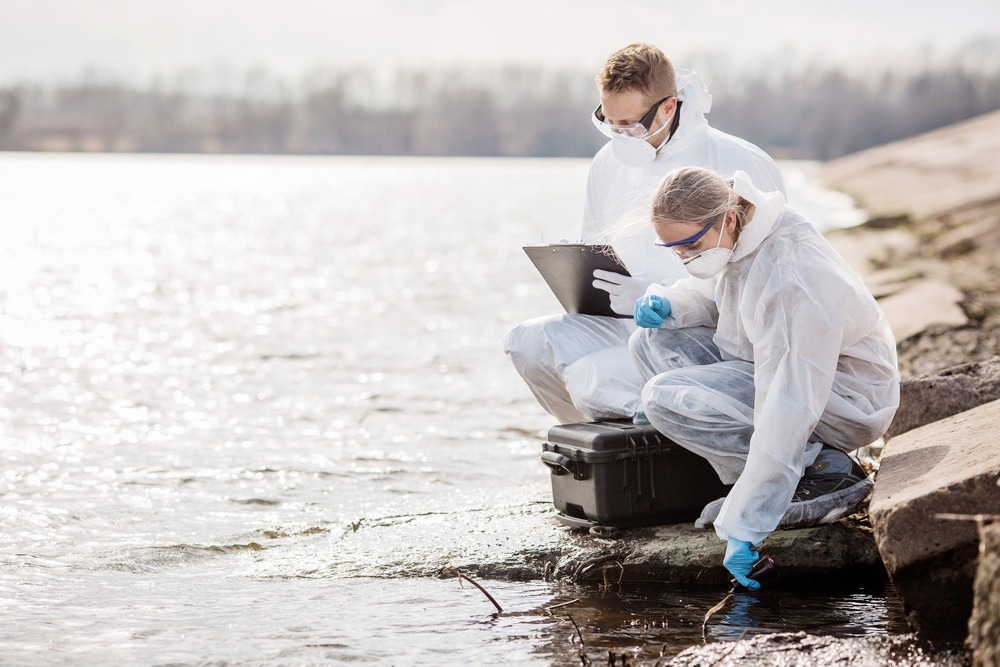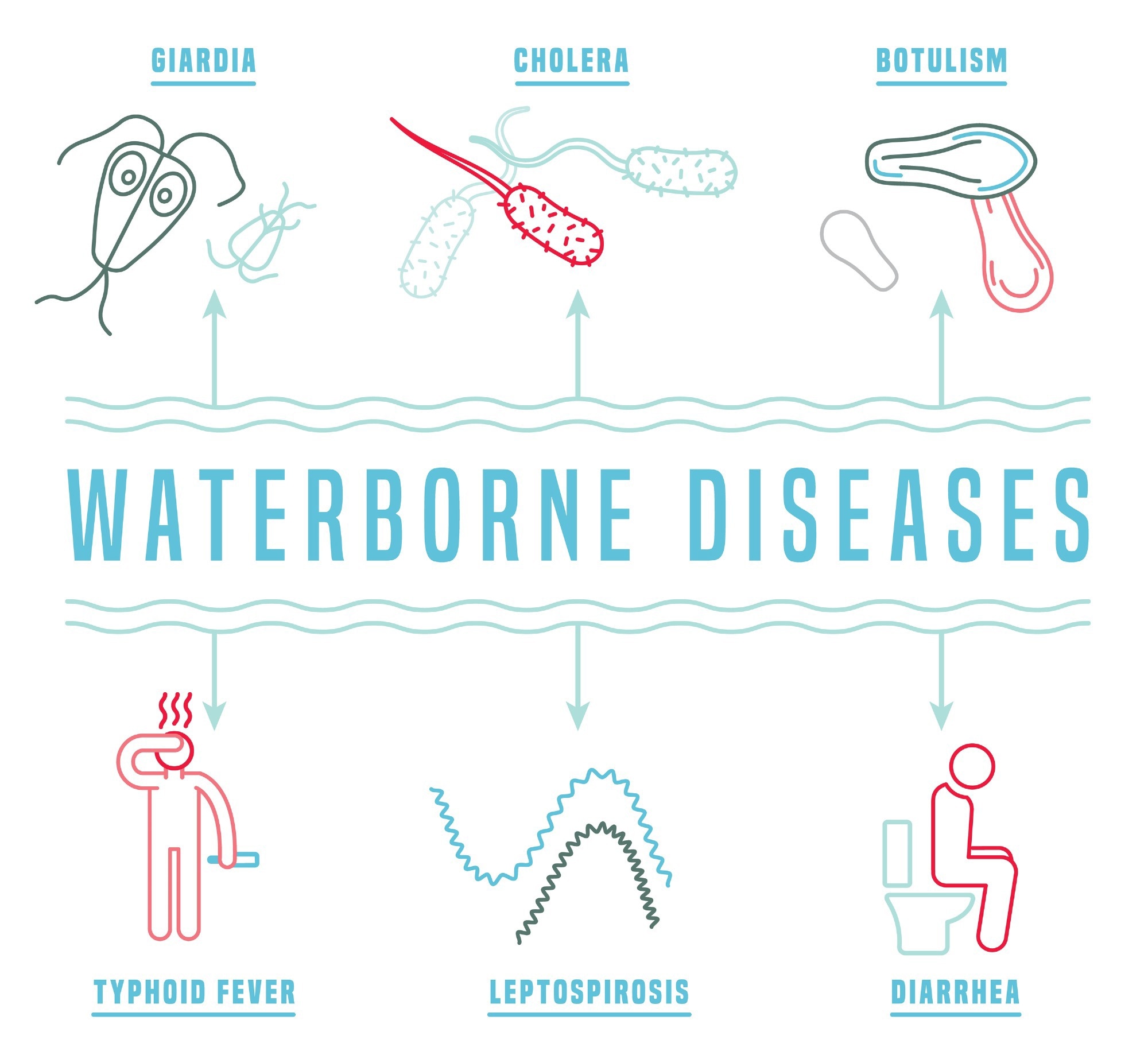Flow cytometry has been applied in several scientific fields in the past few decades. This article will provide an overview of the use of this powerful analytical technique in the field of environmental biology.

Image Credit: PRESSLAB/Shutterstock.com
What is Flow Cytometry?
Flow cytometry is an extremely powerful technique that allows the rapid analysis of single cells and particles in a population. With this technique, particles and cells' chemical and physical characteristics can be measured in a high-throughput manner. Tens of thousands of cells can be examined in minutes using this technique.
In a flow cytometer, target samples are suspended in a fluid and passed through a laser beam one at a time using hydrodynamic focusing or similar methods such as acoustic focusing. Fluorescent markers are used to absorb light and emit a band of wavelengths that provide information on the characteristics of the sample. Light is scattered according to these characteristics.
The scattered and emitted light is then captured by optical components and interpreted by software to provide researchers with the relevant information on the cells or particles being analyzed. Flow cytometry is used for cell counting, cell sorting, microorganism detection, biomarker detection, disease detection, and other purposes.
Flow Cytometry in Environmental Biology
Environmental microbiology is a crucial area of research in the 21st century. The effects of industrial society on the environment are far-reaching, with pollution from multiple industries severely impacting nearly every ecosystem on Earth. Marine pollution is especially problematic and requires complex mitigation strategies to address.
Industrial run-off from sectors such as agriculture and the pharmaceutical industry contains several compounds such as fertilizers and nutrients, which can influence the microbiota in marine environments and soil. Bioactive compounds can cause the proliferation of environmentally harmful microorganisms, and contaminants such as heavy metals can enter the food chain.
Flow cytometry provides environmental microbiologists with an extremely powerful high-throughput analytical technique that significantly improves the detection of harmful microorganisms and toxic, polluting chemicals. This technique can inform better sewage treatment methods, interventions in the case of an accidental pollutant release, and environmental monitoring efforts.
Detecting Marine Picoplankton using Flow Cytometry
Picoplankton are marine photosynthetic organisms that possess intrinsic fluorescence due to the presence of photopigments. Flow cytometry helps to study their biogeochemistry, ecology, and biology. The presence of different photopigments allows the discrimination of different picoplankton species.
These microorganisms are important for studying their effect on primary production and the carbon cycle. Aside from their photopigment content, species of picoplankton such as Synechococcus and Prochlorococcus can be discriminated against based on their size. Monitoring and analyzing these microbial populations is vital due to the environmental damage their proliferation can cause.
Flow cytometry has become a routine procedure for detecting these environmentally critical microorganisms. However, some challenges have been associated with using this method for this purpose. Many flow cytometers use pressure, which makes direct counting problematic, requiring weighing before or after analysis or using counting beads in samples.
Another issue with using flow cytometry for this purpose is the obfuscation of their intrinsic background fluorescence. This requires the analysis of multiple samples to compensate for the issue and provide an accurate analysis of entire cell populations.
These detection issues can be overcome by developing new equipment and protocols. For instance, slowing the velocity of particles and cells by reducing the flow rates of sheath fluids helps to achieve this. Slowing the velocity improves laser interrogation of background populations, which are usually quite dim. Additionally, the time needed to collect photons can be vastly improved.

Image Credit: Double Brain/Shutterstock.com
Identifying Bacteria and Waterborne Pathogens using Flow Cytometry
Aside from plankton, bacteria and waterborne pathogens are also key environmental and health issues. E. Coli, Hepatitis A, Legionella, Salmonella, Cholera, and C. Jejuni are some of the main waterborne pathogens which can cause severe illness in humans. Waterborne bacteria can also infect livestock and other important organisms consumed worldwide.
Using flow cytometers to monitor levels of pathogens in water supplies and raw sewage provides scientists with time-critical information on potential disease outbreaks and environmental issues.
In Summary
Flow cytometry is a powerful analytical technique routinely used in environmental microbiology to detect and monitor environmentally critical microorganisms such as plankton, bacteria, and waterborne pathogens. Additionally, it is used to detect chemicals such as fertilizers, bioactive compounds, heavy metals, and pharmaceutical products such as antibiotics which drug manufacturers and the agriculture industry release.
While some challenges with the technology still need to be addressed by scientists and engineers, research into flow cytometry in environmental microbiology is providing innovative solutions and technologies.
References:
Further Reading